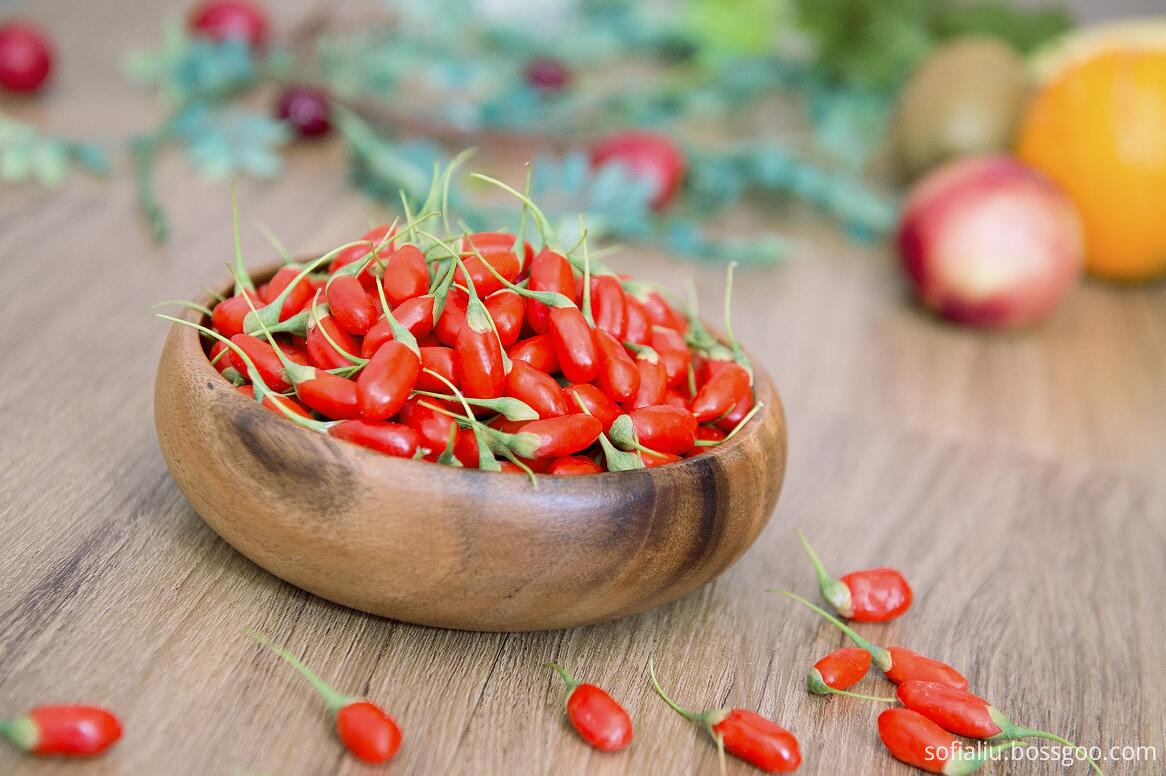1. Methods for storing fresh chestnuts in a commercial manner (1) Store in a cool indoor or ventilated room. Make a storage rack out of bamboo. Each shelf is 3 meters long, 1 meter wide and 2 meters high. Made of ridge shape. Put the chestnut fruit in the room for heat dissipation for 2-3 days before racking it. The weight loss of the chestnut fruit is about 8%. Store chestnuts before storage to remove small, tender, insects and fruit. Put into a 25kg basket, then soak it in water with the basket, and store it on a bamboo rack after lifting. Using this method to store chestnut fruit for 144 days, the freshness rate was 84.2%, the rotting rate was 11%, and there was no germination phenomenon. Can also use 1% acetic acid instead of water treatment, storage to April, good fruit rate of 85%.
(2) Refrigeration Refrigeration is the best way to preserve fresh chestnuts. The temperature in the south is 1-3°C, in the north is 0-2°C, and the relative humidity is 80%-95%.
The frozen chestnuts have less rot and light consumption, basically no germination, and can maintain good quality flavors. The storage period can reach 1 year.
(3) Normally mature chestnut fruit stored in air-conditioned storage is subjected to simple modified atmosphere storage after sweating and heat dissipation. In order to prevent moldiness of chestnut fruit, chestnut fruit should be soaked with 500 times thiophanate solution for 10 minutes before being stored, and then dried and stored.
A film bag fresh-keeping with a thickness of 0.05mm polyethylene film for the inner packaging material, large bags of 37cm26cm58cm, loading fruit 20-25kg; small bags of 19cm13cm30cm, loading 10kg. The packaged chestnuts are stored in a cool, ventilated and relatively stable, room temperature warehouse. In this method, chestnuts can be kept fresh until January of the following year. Moldy fruit is only 1%-2%, and weight loss fruit is 3%-4%. The chestnut fruit basically maintains the original quality flavor.
2 Plastic large accounts are kept with a 0.23mm thick polyethylene film to make large accounts, and the size of the accounts is determined by the amount of their storage. Control the large account of carbon dioxide concentration below 10%, oxygen 3% -5%, temperature -1 -0 °C, relative humidity 90% -95%, can be stored for 4 months.
(4) The sodium dithionite-based deoxidizer fresh-keeping sodium dithionite-based deoxidizer is non-toxic, odorless and does not affect the quality and flavor of chestnuts. Simultaneously, the preparation method is simple. It is an ideal method for preservation of chestnuts, and the freshness can reach 5 months. The good fruit rate is about 95%, and the light consumption rate is about 8%.
2. Several farmer methods for keeping chestnuts fresh (1) Sand trapping method In the south, you can choose a cool indoor place. Spread a layer of dry straw on the ground first, and then sand 6-7cm thick. The humidity of the sand cannot be pinched. Mission is appropriate. Put chestnuts on the sand, each layer 3-6cm thick, and then spread a layer of wet sand, such a layer of wet sand a layer of chestnut fruit alternately; or 1 part chestnut 2 wet sand mixed pile. The layer stack or mixed pile is finally covered with sand 3-6cm, and then covered with dry straw. Stacking height is about 1m. This chestnut can be stored after the Spring Festival.
(2) In the cool and ventilated room with Stork storage method, it is also possible to pour chestnut fruit in well-drained and cool exposed areas. The size of the heap is 1-2m in width and height is not more than 1m. Always check the temperature and humidity. If you find that the heap is hot or dry, you can splash water to cool it. Cover the stack with straw or sorghum stalks for protection against freezing and sun protection. It is best to lay 10cm thick sand on top of the heap. This method can be stored until the following March and March of the following year. It has good freshness and less rot, but it has more germinating chestnuts.
(3) Dry storage method Immerse the mature chestnut fruit in a bucket full of water, remove the floating chestnut fruit, immerse for 3-5 days, remove and put it in the bamboo basket, hang it in a cool and ventilated place, let it dry naturally 20 -30 days later, then put it in a clean altar, put it in full bloom for seventy-eight, flip it once a month, and store it in the Spring Festival. The good fruit rate is above 95%.
(4) Cylinder method At the bottom of the cylinder that has been washed and dried, first put a bamboo sinker on it, put a ventilated bamboo tube in the center of the cylinder, pour the chestnut fruit into the cylinder, lay a chestnut layer of pine needles, and then cover it with a pine needle. The cylinder mouth is also covered with bamboo amphibians to prevent rat damage. Pine needles are changed once a month. This method can also be stored after the Spring Festival. The good fruit rate is above 90%.
(5) Acetic acid treatment After storage of chestnuts, the chestnuts are stored for 3-4 days and then immersed for 1 minute with 1% acetic acid. After filtering, they are put into bamboo baskets. Each pod contains 20 kg of fresh pine needles. Covered with plastic film, stored within 1 month, required to soak 4 times. In March of the following year, 2% salt and 2% soda ash solution can be soaked once. After 1.5 months of storage, the good fruit rate is still more than 85%.
Goji berries nutrients improve cell communication and have antioxidant as well as anti-inflammatory properties. These substances have been shown to increase mitochondrial function and detoxification. It has also been shown that nutrient dense foods such as Goji berries are far superior to supplementation with isolated nutrients contained in juices, capsules or tablets.
Goji berries have been in use for at least the last 1,700 years. They have become a staple in not only in Eastern cuisine, but also Eastern medicine.
In Chinese mythology, goji berries are known as the fruit of immortality. Even today, Chinese medicine uses goji berries to treat the liver, immune system, circulation problems, and more.
.
Funtion of Goji Berry:
1) Inhibit tumor growth and improve disease resistance;
2) Powerful anti-oxidant which extends life, and improves the memory;
3) Neutralize the side effects of chemotherapy and radiation;
4) Normalize blood pressure & balance blood sugar
5) Lower cholesterol, lose weight.
6) Support eye health and improve your vision.
7) Support healthy liver function.
8) Support normal kidney function
9) Increase calcium absorption

Please feel free to leave us message.
Any inquiry would be replied within 2 hours on working days!
Production Specification Sheet
|
Product Name
|
Goji Berry
|
Country of Origin
|
Ningxia in China
|
|
ANALYSIS
|
DESCRIPTION
|
TEST METHODS
|
|
Product Name
|
Conventional Goji Berry
|
Organic Goji Berry
|
|
Form
|
Spindle and slightly shrinks
|
SN/T 0878
|
|
Color
|
Bright red or purplish red
|
SN/T 0878
|
|
Taste and Smell
|
Characteristic
|
SN/T 0878
|
|
Size
|
280granule/50gram
380granule/50gram
500 granule/50gram
|
160granule/50gram
220granule/50gram
Ungraded
|
SN/T 0878
|
|
Total bacterial count, cfu/ml
|
≤100000
|
GB4789.2
|
|
Salmonella
|
Absence
|
GB/T 4789.4
|
|
SO2
|
NMT 30
|
SN/T 0878
|
|
Moisture, %
|
NMT13
|
GB/T 5009.3
|
|
Pb, mg/kg
|
NMT 2.0
|
GB/T 5009.12
|
|
As, mg/kg
|
NMT 1.0
|
GB/T 5009.11
|
|
Cu, mg/kg
|
NMT 10.0
|
GB/T 5009.13
|
|
Pesticide Residue
|
Acetamiprid <0.2PPM;
Imidacloprid<0.2PPM;
Fenvalerate<0.1PPM;
Cypermethrin<0.1ppm
negligible with other pesticides
|
Negative
|
GB/T 19648-2006,
GB/T 200769-2008
|
|
Shelf life
|
12 months months if stored in a cool ventilated dry place
|
|
Package
|
4.54Kg/Bag, 4Bags/ Carton (10Pounds/bag,4bags/Carton);
5KG/Bag,4Bags/Carton
|
|
Storage
|
It should be stored under the dry and ventilated environment in original bag, the temperature no more than 20 ℃
|
Conventional Goji Berry
Conventional Goji Berry,Conventional Goji,Conventional Dried Goji Berries,Conventional Wolfberry
Ningxia Wolfberry Goji Industry Co.,ltd , https://www.nx-wolfberry.com

